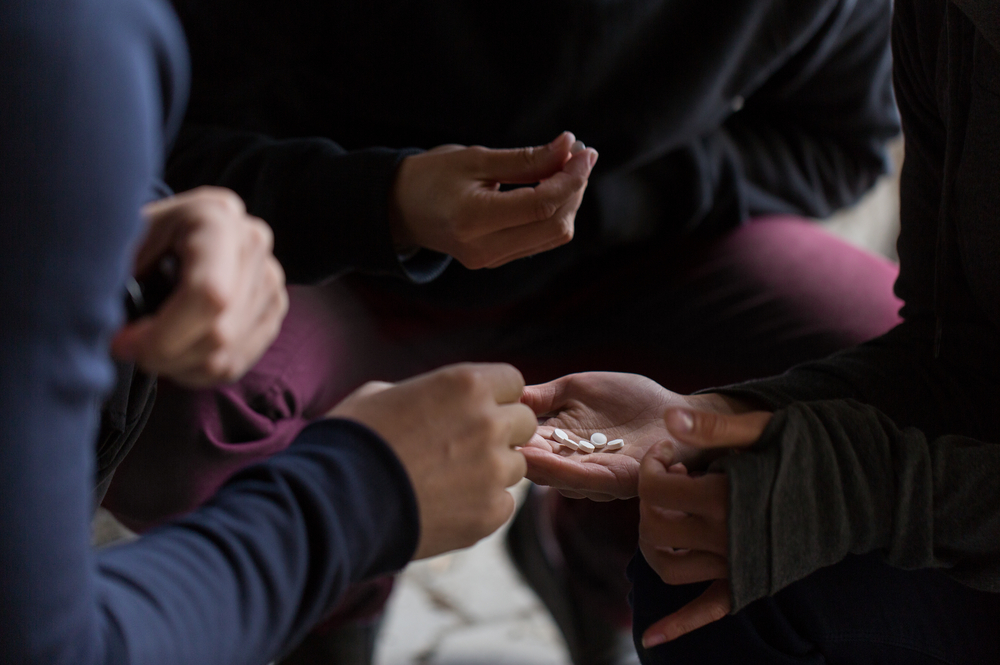Negative Thinking Patterns: Labelling & Personalization
“If you have secretly longed for significance,
the journey does not begin
out there in the world,
But deep within,
where you embrace
Your honest self.”
–Morgan Harper Nichols in her book of poems, All Along You Were Blooming
Morgan Harper Nichols, who is often referred to as an Instagram poet since her poetry is popular among young people, writes about one of the solutions to the personalization and labeling negative thinking patterns. You’ll learn more about this later in this article.
This article will help you understand what these two types of negative thinking patterns are and what you can do to help your teenager manage and even overcome these thoughts. Please do not use this article as a substitute for clinically-licensed mental health help. As we’ve mentioned in previous articles, there’s only so much that you can do as a parent or family member of a troubled teen and that’s where schools for troubled teens will be helpful to you.
Personalization: “There’s something wrong with me.”
Personalization is a type of cognitive distortion (negative thought pattern) where an individual attributes negative occurrences to themselves or when that individual takes things personally. Here’s a chart comparing healthy thought patterns and the personalization negative thought pattern.
[su_table]
| Healthy Thought Pattern | Personalization Cognitive Distortion |
|---|---|
| “She hasn’t called me once since our first date. She did mention starting a new job though. I’ll give it some time before I reach out again.” | “She hasn’t called me once since our first date. She mentioned her new job but I bet that was just a way of letting me know that she’s not interested.” |
| “Dad doesn’t really ask me how my day’s going. I wonder if he’s stressed out about moving to this new neighborhood.” | “Dad doesn’t really ask me how my day’s going. It’s like I don’t exist.” |
[/su_table]
As you can see from the chart, a teen with healthy thought patterns is able to find alternative explanations for why things may be the way they are. This teen might also be able to even question their understanding of if the way they’re viewing things is actually even accurate.
But with the personalization negative thought pattern, your teen will attribute situations to themselves. As you can see in the chart, your teen will most likely think of problems as stemming from them or how people view them. The underlying thoughts of these negative thought patterns are “I’m bad” or “There’s something wrong with me.”
Labelling: “There’s something wrong. It might be with you or me.”
On the other hand, a teen struggling with the labelling negative thought pattern might find something wrong in either themselves or others. The chart below compares labelling with healthy thought patterns.
[su_table]
| Healthy Thought Pattern | Labelling Thought Pattern |
|---|---|
| “I didn’t make it into the soccer team, but that’s okay. I’ve got next year to try out again.” | “I didn’t make it into the soccer team. I”m such a loser!” (negative self-label). |
| “My mom got into the argument I was having with my brother. I know that she’s trying to help but it felt like the situation was getting worse.” | “My mom got into the argument I was having with my brother. I always knew that she liked him better than me. Mom plays favorites all the time.” (negative labelling of others) |
[/su_table]
In the chart that we provided, you’ll notice that with healthy thoughts, a few things stand out:
- A teen with healthy thoughts can find explanations to behaviors that challenge them or make them feel uncomfortable.
- A teen with healthy thoughts can think from a different perspective.
- A teen with healthy thoughts respects the idea that people’s behavior (including their own behavior) isn’t just black and white. They can see that other people and their own behaviors are more complicated than they look.
The labelling thought pattern, however, presents some challenges:
- The underlying idea with this thought pattern is the idea of resisting situations and things rather than just accepting things as they are. For example, “If this person doesn’t do things the way that I would like, then they’re a jerk.”
- It can lead to serious mental health disorders like Borderline Personality Disorder (BPD) and Post-Traumatic Stress Disorder (PTSD).
- In the book The Body Keeps the Score, Dr. Bessel van der Kolk, a psychologist, writes about how veterans in his group therapy class would only talk to him if they felt like he was “one of them.” Dr. Kolk writes that labelling people as “safe” or “unsafe” is one of the signs of PTSD.
- In BPD, individuals might idealize and then devalue people in their lives. Idealizing is thinking that because they love or care for an individual, that individual can do no harm or wrong. Because idealizing can lead to putting someone on a pedestal, it’s only a matter of time before that person does even something slightly wrong and is seen as a “horrible” person (this is called devaluing that person). With BPD, your teen might be labelling people as “good’ or “bad.”
Overall, both the personalization and labelling cognitive distortions are problematic as they assign “goodness” and “badness” to either themselves (as in personalization) or themselves and others (as in labelling).
Tips to Help Your Troubled Teen Manage These Two Cognitive Distortions
Here are some ways to help your troubled teen manage these two negative thought patterns. Again, don’t use these tips as a replacement for professional help.
1. Positive Self-Talk
With both personalization and negative self-labelling, your teen might be engaging in a lot of negative self-talk that can be disabling. Ask your teen to talk to themselves like they would a friend. This might include reframing the conversations.
For example, instead of labelling themselves as “a loser” for not making it into teams or clubs that they wanted to join, have them affirm themselves with statements like, “You know, I’ve been practicing for this team for a while now. I’m really proud of myself for trying.”
2. Encourage Them to Call Out Behaviors and Not People
As the saying goes, “hate the sin and not the sinner,” this also applies to behaviors that we might not like in ourselves or others. For example, instead of labelling others as “jerks” or “inconsiderate,” your teen would be better off having conversations about behavior. As you do this, remind your teen that they can’t control other people’s behaviors and that ultimately, things are not always about them.
3. Encourage Your Teen to Embrace Their “Honest Self”
Because both personalization and negative labelling cause devaluation or idealization, have your teen have a conversation about what it means to be a human. Ask them questions like “Is it okay to make mistakes?” and “Is it okay to feel _____ or ______ sometimes?” Your teen will most likely affirm that being flawed and not perfect is normal and perfectly fine.
The goal in having these conversations is to get your teen to ultimately recognize that people, including themselves, are not either bad or perfect. It’s about getting your teen to move beyond rigid ways of thinking and behaving. Ultimately, if you suspect that your troubled teen needs professional support, consider contacting a residential treatment school.











0 Comments